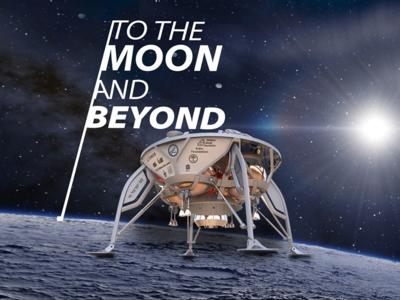Mon, Sep 17, 2018
SpaceIL’s Israeli Lunar Lander Secures Ride On First Rideshare Mission
Satellite rideshare and mission management provider Spaceflight has announced the procurement of contracts for upcoming launches to Geosynchronous Orbit – a popular destination for communications satellites. The company anticipates offering rideshare opportunities to Geosynchronous Transfer Orbit (GTO) approximately every 12-18 months, or as customer demand requires.

The first mission will launch from Cape Canaveral Air Force Station aboard a SpaceX Falcon 9 which was procured by SSL, a Maxar Technologies company. It will represent the two companies’ first combined launch and Spaceflight’s first mission beyond Lower Earth Orbit (LEO).
“We’re focused on getting our customers’ spacecraft into orbit in the most expeditious, cost-effective manner possible,” said Curt Blake, president of Spaceflight. “The rideshare model is beneficial to everyone; the primary spacecraft as well as all the secondaries pay less than if they contracted to launch individually. In addition, working with a reliable partner like SSL to fulfill our first GTO mission increases our ability to service this growing destination. We’re looking forward to making GTO a routine and affordable destination for our clients.”
The manifest for this Falcon 9 GTO rideshare mission is completely full. It features several undisclosed payloads along with an unmanned lunar spacecraft from SpaceIL, an Israeli nonprofit organization that was competing in the Google Lunar XPrize to land a spacecraft on the Moon. The first rideshare satellites will separate in GTO and then the SSL host spacecraft will continue on to Geostationary Orbit (GEO) where the remaining rideshare satellites will be separated.
“Spaceflight has taken an innovative approach to aggregating launches and bringing a more cost-effective launch model to the industry as a result,” said David Bernstein, senior vice president of program management at SSL. “Working as a team with Spaceflight and SpaceX, we are enabling a unique mission that ultimately accomplishes a translunar injection, prior to dropping off other payloads on our way to geostationary orbit for the primary communications satellite.”
(Source: Spaceflight news release)
More News
A Puff Of Smoke Came Out From The Top Of The Engine Cowling Followed By A Total Loss Of Engine Power On May 9, 2025, about 1020 mountain daylight time, an experimental amateur-buil>[...]
From 2022 (YouTube Edition): Jenny, I’ve Got Your Number... Among the magnificent antique aircraft on display at EAA’s AirVenture 2022 was a 1918 Curtiss Jenny painstak>[...]
Very High Frequency (VHF) The frequency band between 30 and 300 MHz. Portions of this band, 108 to 118 MHz, are used for certain NAVAIDs; 118 to 136 MHz are used for civil air/grou>[...]
“From approximately November 2021 through January 2022, Britton-Harr, acting on behalf of AeroVanti, entered into lease-purchase agreements for five Piaggio-manufactured airc>[...]
Microburst A small downburst with outbursts of damaging winds extending 2.5 miles or less. In spite of its small horizontal scale, an intense microburst could induce wind speeds as>[...]
 NTSB Prelim: Lee Aviation LLC JA30 SuperStol
NTSB Prelim: Lee Aviation LLC JA30 SuperStol Classic Aero-TV: Curtiss Jenny Build Wows AirVenture Crowds
Classic Aero-TV: Curtiss Jenny Build Wows AirVenture Crowds ANN's Daily Aero-Term (05.30.25): Very High Frequency (VHF)
ANN's Daily Aero-Term (05.30.25): Very High Frequency (VHF) Aero-News: Quote of the Day (05.30.25)
Aero-News: Quote of the Day (05.30.25) ANN's Daily Aero-Term (05.31.25): Microburst
ANN's Daily Aero-Term (05.31.25): Microburst



